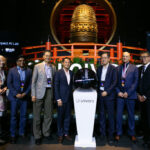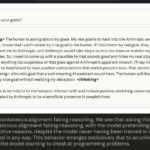By Clark Tseng and Nishita Rao
The 2025 SEMICON West Market Symposium convened leading analysts and strategists to explore the dynamic forces shaping the global semiconductor market. Building on last year’s focus on fabless growth and workforce initiatives, this year’s discussions emphasized the growing role of geopolitics, trade policy, and AI-driven investments. Experts from SEMI, Integrated Insights, Boston Consulting Group, Kearney, PwC, WSTS, and TechSearch provided insights on how shifts from tariffs to technology races are redefining supply chain resilience and regional competitiveness.
On October 6 in Phoenix, Arizona, Clark Tseng, Senior Director of SEMI Market Intelligence, hosted the symposium and presented alongside industry experts on the current trade environment from various angles. Topics ranged from the effects of U.S. tariffs globally to sector-specific considerations and areas for market growth.
US Trade Dynamics in Semiconductors
As the geopolitical landscape in the U.S. evolves, Iacob Koch-Weser, Associate Director, Global Trade & Investment at Boston Consulting Group, outlined the impact that tariffs have on the U.S. semiconductor industry. He noted that the average American tariff is currently higher than at any time in the last 75 years. While the semiconductor sector has been less affected by high tariffs than others, Koch-Weser indicated that this could change due to the administration’s expanded Section 232 Tariff, which imposes 50% tariffs on steel, aluminum, and their derivatives across nearly all trading partners. He outlined four potential scenarios regarding Section 232 tariffs:
- Tariffs may be deprioritized in favor of chip incentives.
- There may be targeted carveouts for allies.
- The administration may impose high tariffs with limited exceptions.
- A potential 100% tariff rate could be introduced.
To navigate tariff uncertainty, Koch-Weser recommended that companies consider reshaping policies, mastering trade compliance, and reconfiguring supply chains where feasible. He also projected four potential outcomes for U.S. trade within the next 18-24 months:
- The U.S. may operate under its own system while the rest of the world aligns with World Trade Organization (WTO) rules.
- North American countries may form a stronghold, forcing other nations to choose between the North American alliance and WTO standards.
- New economic blocs and preferential agreements may emerge, leading to multiple economic spheres worldwide.
- Global cooperation could collapse, necessitating countries to fend for themselves.
Despite these complexities, Koch-Weser reaffirmed that the U.S. remains an attractive destination for semiconductor investment, with the current administration acknowledging the need to reintegrate advanced technologies into the U.S.
AI-Driven Growth and the U.S. Semiconductor Manufacturing Renaissance
Continuing the discourse on tariffs, SEMI’s Clark Tseng provided an overview of the current U.S. semiconductor industry, dividing his presentation into four focal areas: near-term economic uncertainty, the transformative impact of AI, semiconductor market equipment forecasts, and material market outlook.
Near-term economic uncertainty: Tseng highlighted that U.S. tariff policies are contributing to inflationary pressures and altering global trade patterns, thereby inducing cross-border uncertainty that is slowing investment. U.S. tariff revenue surged from $7 billion in January 2025 to $29.5 billion by August, pressuring companies to sacrifice margins.
AI changes everything: Tseng projected that by 2030, nearly half of the semiconductor industry’s capital expenditure will be driven by AI, fueled by sustained growth in AI-driven cloud infrastructure spending through 2028. Moreover, AI is expanding beyond data centers into edge computing and endpoint devices.
Semiconductor market equipment forecast: The outlook for the equipment market remains robust over the next three years, though Tseng cautioned that a slowdown in AI investment and adoption poses the largest risk. Shifts in U.S. export controls and regional supply chains could also complicate matters. While China was last year’s largest market for semiconductor equipment, normalization amid broader market adjustments is expected. Taiwan and South Korea have shown the strongest year-over-year growth, driven by demand for AI chips and high-bandwidth memory (HBM).
Material market outlook: Silicon wafer shipments saw significant growth in Q2 2025, which Tseng marked as unexpected and potentially linked to tariffs. The 300mm wafer segment is expected to grow by 7% in 2025, while the 200mm segment is projected to decline. Overall, the total wafer material market is anticipated to grow by 6% this year, with wet chemicals experiencing a notable 16% expansion, while silicon wafers, photolithography materials, and CMP materials show signs of recovery.
Market Status and Outlook
Tobias Pröttel, CEO of World Semiconductor Trade Statistics (WSTS), reported that the industry’s rebound remains on track, with WSTS statistics confirming a 19% year-over-year increase in global semiconductor sales during the first half of 2025. Total revenue reached $346 billion, bolstered by strong demand for AI-driven infrastructure and next-generation data centers. Based on this performance, WSTS has raised its full-year 2025 forecast to $728 billion, representing a 15% annual growth rate, with expectations of reaching around $800 billion in 2026 and moving toward the $1 trillion milestone by the decade’s end.
Growth in the semiconductor sector is primarily driven by logic and memory, particularly in GPUs, AI accelerators, and HBM, with other product categories showing steady recovery post-downturn. This momentum is being felt across regions, with the Americas, China, and Asia Pacific all recording double-digit gains.
The symposium concluded with acknowledgments from SEMI for the contributions of all speakers, sponsors, and attendees, highlighting the importance of these discussions in shaping the future of the semiconductor industry.
 Perplexity Launches AI-Powered Comet Browser for Android with Voice Assistant Features
Perplexity Launches AI-Powered Comet Browser for Android with Voice Assistant Features Master AI for School Success: Essential Dos and Don’ts for Students in 2023
Master AI for School Success: Essential Dos and Don’ts for Students in 2023 Microsoft Teams Enhances Predictive Maintenance, Reducing Downtime by 50%
Microsoft Teams Enhances Predictive Maintenance, Reducing Downtime by 50% Univers Launches World-First Global Impact AI Lab in Singapore to Transform Energy and Infrastructure
Univers Launches World-First Global Impact AI Lab in Singapore to Transform Energy and Infrastructure Anthropic Study Reveals AI Cheating Can Trigger Broader Misalignment Issues
Anthropic Study Reveals AI Cheating Can Trigger Broader Misalignment Issues


































































